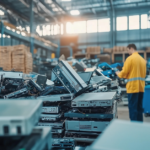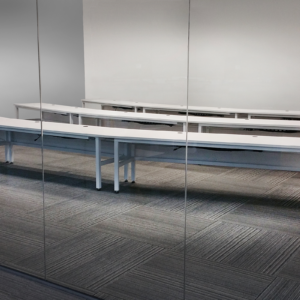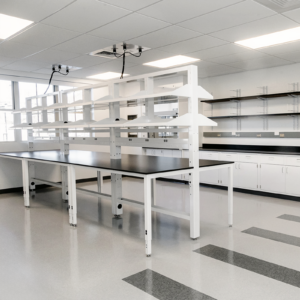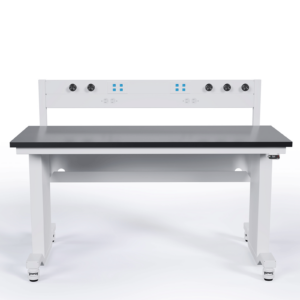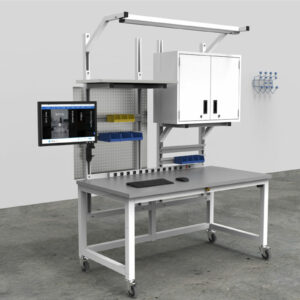AI has helped uncover the structures of millions of proteins. Can it be used to identify useful materials as well?
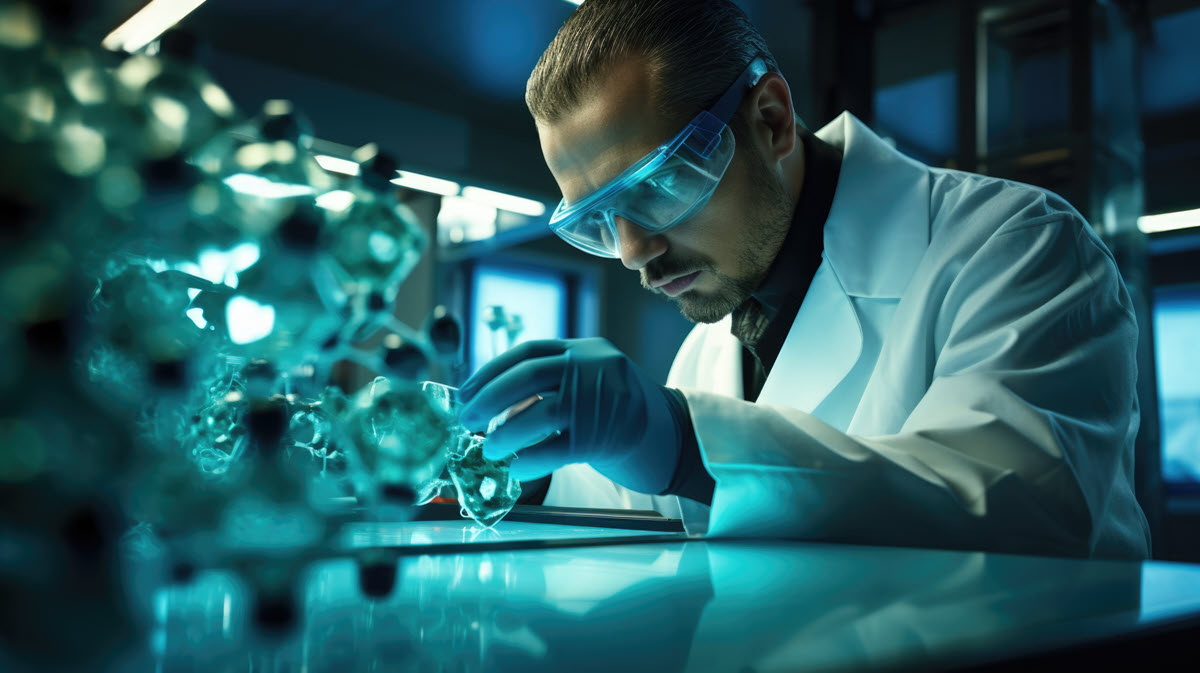
Artificial intelligence and machine learning-based research efforts are accelerating scientific discovery across the board.
Among the premier examples is Google’s DeepMind project, which has been able to predict the complex folding structures of over 214 million individual proteins – a feat that could not be accomplished so quickly without the assistance of AI/ML.
Now, attention is focusing on using AI-based methods to revolutionize the discovery of novel new materials in the hopes of solving some of the thorniest problems in industries ranging from high-tech electronics manufacturing to energy generation to environmental conservation and sustainability.
From a science perspective, the discovery of new material applications has some similarities with protein research. Both have incredibly small internal structures based on a limited number of elements (in the case of materials) or amino acid sequences (the building blocks of proteins) that are tricky to visualize even with high-tech microscopes – and like proteins with their changing amino acid sequences, even minor variations in the crystalline structures of elements in materials can produce results with vastly different properties.

Chemistry is the key to advanced, high-performance materials
If we want to identify (or create) a new material to meet a specific requirement, investigating its atomic structure is important. For example, carbon atoms can be arranged in different ways to produce dramatically different results: Carbon atoms can be formed into diamonds or the lead in pencils – or flattened into a single layer to produce slippery graphite.
But we aren’t limited to a single element in our atomic structure. Many of the most commonly known materials result from mixing different elements together to produce alloys – for example, bronze is a combination of copper and tin, brass is made of copper and zinc, and steel is a combination of iron and carbon.
More sophisticated alloys, such as molybdenum steel, helped give the Model T Ford its renowned roadworthy toughness, while the strong yet lightweight aluminum alloy 2024 (made with small amounts of copper, manganese, and magnesium added to the aluminum) helped the Boeing 747 widebody jets take to the air.
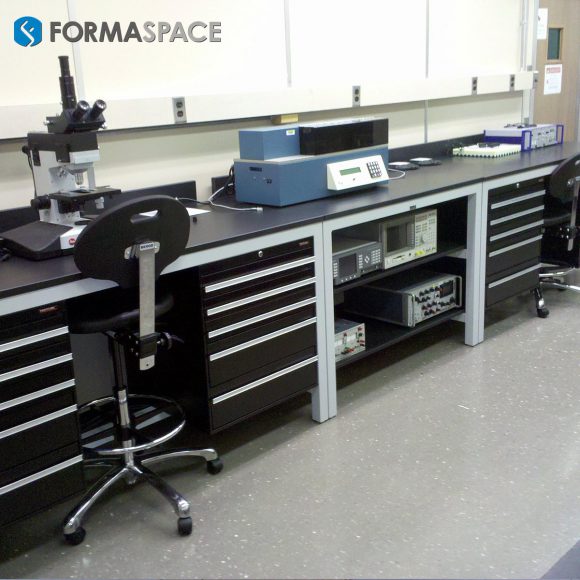
How is AI able to accelerate identifying candidates that have the best chance of matching a given set of material property requirements/use cases?
In the current era, a significant effort has been directed at improving the composition of batteries for use in electric vehicle motors.
Take lithium, for example. It’s become a staple in battery design for decades now. The laptop computer you use or the smartphone in your hand is powered by a lithium-ion battery. EVs typically use lithium-ion or lithium-iron phosphate batteries, which consume significant amounts of lithium, particularly in China, where the majority of batteries are manufactured.
As a result, prices in China for lithium carbonate (the raw material for producing lithium for batteries) skyrocketed to a peak of $80,000 per metric ton in 2022. Since that time, Chinese EV sales are way down, reducing demand for lithium carbonate, and prices have since dropped to around $20,000 per metric ton, but an increase in demand could quickly drive lithium commodity prices back up.
But cost is not the only reason to seek an alternative to lithium in batteries – mining and refining lithium is cost-intensive and takes a big toll on the environment. Lithium-ion batteries can also cause dangerous fires, and efforts to recycle lithium efficiently are also proving difficult.
So could there be a cheaper, more environmentally friendly alternative to the ubiquitous lithium-ion battery?
AI researchers at Microsoft sought to find out. They teamed up with the Department of Energy’s Pacific Northwest National Laboratory (PNNL) to investigate over 32 million candidate materials.
The first goal was to create millions of synthetic data points to train their AI data models to correctly identify material properties, ranging from energy capacity to mechanical properties, such as stress and force resistance.
With the training data in hand, the data scientists were able to screen 32 million materials to identify 500,000 potentially suitable candidates.
This screening process was accomplished at superhuman speed. The initial AI screening process was estimated to be 1,500 times faster than using traditional theoretical methods.
The 500,000 candidates were then screened again, looking for those materials that had the most promising functional characteristics. This resulted in a reduction to 800 candidates. A third screening reduced the number of candidates down to 150 materials that could potentially be useful for battery chemistry.
From a human researcher perspective, 150 is a much more manageable number than 800, or 500,000, or 32 million!
PNNL material scientists lent their expertise to the Microsoft AI team, creating additional screening parameters based on factors such as practical product development considerations and raw material availability, which narrowed the list down to the final 18 candidates.
Of these, the top candidate could be a game changer in battery technology.
The proposed chemistry uses significant amounts of widely available sodium, reducing the need for lithium by 70%.
Of course, predictions sometimes come true, but they often fail. PNNL researchers are investigating the properties of this new candidate battery chemistry to see if it pans out as a robust new technology or not.

How quickly can AI sort through the world’s materials?
If AI and machine learning can screen millions of material candidates to find suitable options for creating next-generation battery chemistries, how long would it take to quantify all the world’s materials?
The race is on.
For example, Google’s DeepMind team is on the case.
They have created a new project to identify promising materials dubbed “Graphical Networks for Material Exploration,” or GNoME for short.
In a paper published in Nature, GNoME team researchers have identified 2.2 million novel material structures that they believe have heretofore not been investigated by humans. Work is underway to investigate over 700 of the most interesting and promising of these materials.
Keeping up with the incredibly rapid pace of material science research generated by AI-machine learning systems is difficult – if not impossible, and so it appears a shift in philosophy is underway.
The question is, what role should human researchers play in the process?
In the case of Microsoft and PNNL above, the AI/ML tools focused on identifying the best candidates, allowing human researchers to take over and study the most promising candidates.
But what if we used the power of AI and machine learning to perform those tasks as well as part of the screening process?
This method, which we will certainly be hearing more about in the future, goes by terms such as “Self Driving Labs” (SDLs) or Autonomous Laboratories, the latter being the term used by researchers at Lawrence Berkeley National Laboratory who are investigating some of the promising material candidates identified by GNoME.
In this self-driving or autonomous laboratory scenario, the decisions about what experiments to perform on promising material candidates are determined by the AI/ML systems themselves.

What are some of the high-priority material science problems we need to solve?
While the self-driving laboratory methodology may be a startling development, it could help us unlock new materials to help solve some of the most challenging problems in material science.
These include:
- Creating high-density lightweight batteries to power large commercial aircraft.
- Find substitutes for problematic materials, such as plastic, by developing replacements that are easy to recycle or can decompose on their own to help, for example, reduce plastic pollution entering the food chain.
- Find alternatives to concrete (which is very carbon intensive) in building and infrastructure construction projects.
- Identify room-temperature superconductors and other materials that could power quantum computers.
- Create cheaper, higher-efficiency solar panels and wind turbine generators.
- Develop stronger, more fatigue-resistant materials for aerospace and infrastructure projects.
- Create bio-compatible materials for medical device implants that are less invasive and last longer – hopefully eliminating the need for removal and replacement over time.

Formaspace is Your Materials Laboratory Research Partner
Lab. Education. Industrial. It’s in our DNA.
Talk to your Formaspace Sales Representative or Strategic Dealer Partner today to learn more about how we can work together to make your next construction project or remodel a success.



